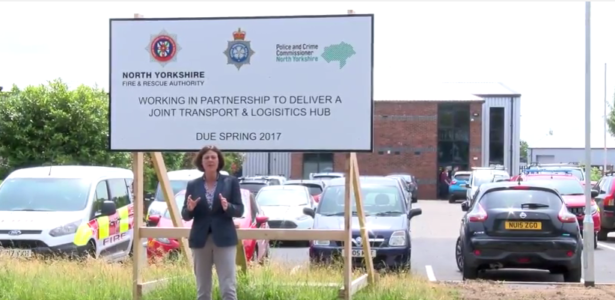One shared garage – a public disservice

Back in November 2013, North Yorkshire’s police and fire services signed a pledge to share a swathe of buildings, support and back office services and to work better together in our local communities. The long list included joint HR, finance, training, transport, purchasing and communication teams.
At the same time, a pilot called ‘the Safety Service’ was set up, which had firefighters and Police Community Support Officers (PCSOs) visiting the homes of the elderly, isolated and vulnerable in the Bedale and Catterick area. The teams involved in the pilot were hugely enthusiastic and saw the immediate benefits of closer working on the prevention activities of the two services.
So meetings were held. ‘Governance’ was established to see plans through. Reports were prepared and discussed. But four years on, where are we now, what have we achieved since 2013? To be sure, there is some excellent joint working on the ground, including in Harrogate. And last month a new joint transport and logistics hub opened in Thirsk. This is a large garage where mechanics and staff maintain and service police and fire vehicles. It’s a very welcome step indeed and savings are being made. But dig a little deeper and you’ll soon discover that a lot more could be done. Essentially, there are two teams in the garage, which is divided principally into two separate areas. So, on the surface, we are saving money and working together, but in reality there are two separate organisations sharing a garage.
This pattern is repetitious. In Northallerton, there are two HQs – one for fire, one for the police. In about 20 locations around the county, we have police and fire stations so close to each other they might be shared (only one is shared so far – in Bedale, although Ripon is in progress and discussions are being had about others). We have two finance teams. Two HR teams, two central control rooms, two senior management teams. In fact, pretty much two of everything. For example, if the fire service were to move into the new police HQ in Northallerton, it would save an additional £250,000 per year on top of the £10m we would already be saving within the policing budget. All at a time when both fire and police services are under significant pressures.
For example, via their ‘Fire Cover Review’, the fire service is right now phasing out at least 30 full time firefighter roles, and plans to phase out more are being put before the Fire Authority in September. And the police are seeing increasing demand on their services, especially in the control room and recorded crime is increasing.
My position is therefore simple. Short of a merger – as I don’t think that would be right – we should be doing everything possible to combine our efforts to protect our frontline services. Firefighters and police officers protect people and we must protect them. This means putting individual organisational needs to one side – pooling our sovereignty – and working together to make best use of the public pound.
Last year Parliament passed a new law that allows Police and Crime Commissioners to take on the oversight of the fire service, as we do for the police. I immediately saw this as a potential way through the barriers we have encountered to date, that have prevented us from doing what we all agree needs to be done. Working better together, in the interest of the public.
I am pleased therefore to have recently started a 10-week consultation proposing changes to the oversight of North Yorkshire Fire and Rescue Service. But what difference would this make? I’ve already mentioned sharing buildings and saving money. Indeed I have identified at least £6.6m savings in my plan, all of which could be better spent on frontline services.
However saving money isn’t the only reason for doing this. The Safety Service was a practical example of how vulnerable people in rural areas could benefit from closer working. Taking this idea one step further, we could develop a new joint volunteer role which combines Special Constables or even PCSOs with volunteer firefighters. This has proven to be a success in Devon and Cornwall for example. And it would do a huge amount to shore up teams in rural areas – such as Summerbridge, which at times like many other rural stations struggles to hold a full complement of available firefighters.
These are just two examples of what more could be done. Thus, my core argument is that by combining the oversight of police and fire – not the services themselves – we can increase and speed up collaboration. This is important because taking four years to share a garage simply isn’t good enough, when the number of firefighters is reducing and the police are having to deal with more demand with fewer resources.
So if you have a moment, please be sure to visit www.telljulia.com and let me have your views.
Thank you.
